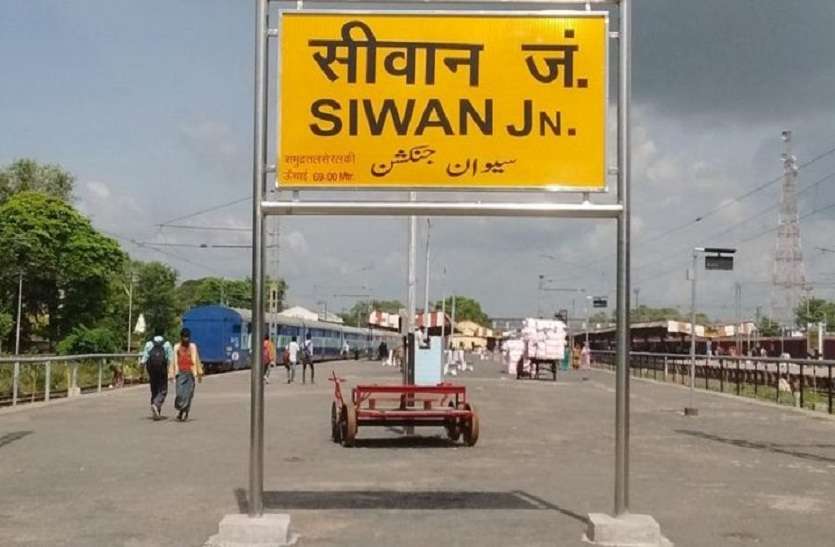Top Tourist Attractions in Siwan
Siwan is a city in the Indian state of Bihar, as well as a nagar parishad. It is the administrative centre of the Siwan district and one of the area’s three urban towns. It is near to the state of Uttar Pradesh. Siwan, a significant portion of Bihar, requires no introduction, since the region has produced several luminaries, including Dr. Rajendra Prasad, the first President of the Republic of India. Siwan, which was previously a part of Saran, became an autonomous district in 1976. It is well-known for its several specialties, including culture, heritage, and, most importantly, tourism.
Korara, Maharajgani, Mehandar, Bikhaband, and Sohagara have all contributed to the tourist department’s success in recent years. Siwan is made more attractive by Maharajgani, a recognised town and an outstanding vacation destination.
Best Places to Visit in Siwan
- Sohagra Dham
- Mahendra Nath Temple
- Zeeradei
- Ashiana
- Anand Bagh Math
- Sunder Bagh Math
- Raghunathpur
- Bhikhabandh
- Panchmukhi Shivalinga
- Burhiya Mai Temple
- Amarpur
- Faridpur
- Darauli
- Don
- Hasanpura
- Lakri Dargah
- Maharajganj
- Mairwa Dham
- Mehandar
- Bhikhabandh
Sohagra Dham
For the worship of Lord Shiva, Baba Baijnath Dham situated in Devgarh is famous throughout the country, where a huge crowd of devotees and Shiva devotees arise in the month of Saawan, but another Dham is famous for the glory and grace of Bholenath Lord Shiva; Of Sohagra Dham Where, in the Baba Hans Nath Temple, it is believed that there is a belief that the worship and burning of puja and burning there do not only fulfill the desires of the devotees but also get the right of the husband and the child.
For the worship of Lord Shiva, Baba Baijnath Dham in Devgarh is famous throughout the country, where a large crowd of devotees and Shiva devotees arise in the month of Saawan, but another Dham is famous for the glory and grace of Bholenath Lord Shiva; of Sohagra Dham, where it is believed that the worship and burning of puja and burning there not only fulfil the desires of the devotees but also get the right
Devotees, particularly ladies and virgin women, are instructed to worship on the festival of Sawan in Sohagra Dham, located in Guttani block of Siwan district. Sohagra Dham, located on the Bihar-Uttar Pradesh border, is a legendary site. The massive Shivling of Lord Shiva may be found in the Baba Hans Nath Temple, which is located here.
In the month of Savan, this becomes a unique focus of religion. Devotees travel long distances to worship Lord Shankar here. There is a large number of devotees gathering, especially on Monday, to conduct Shivling Jalabhishek.
Mahendra Nath Temple
The Mahendra Nath Temple The Mahendra Nath temple of Lord Shiva, located in Mehdar village under Siswan block, some 32 kilometres south of the district capital, attracts tourists from far-flung locations, including foreigners.
Zeeradei
Zeeradei is around 13 kilometres from the district headquarters and is notable as the birthplace of India’s first president, Dr. Rajendra Prasad, who was subsequently awarded the Bharat Ratna. Dr. Prasad, affectionately known as Rajendra Babu by his friends and admirers, was a symbol of simplicity, sincerity, and commitment.
Ashiana
This is the birthplace of Maulana MazharulHaq, one of the country’s greatest liberation fighters and a symbol of Hindu-Muslim cooperation.
Anand Bagh Math & Sunder Bagh Math
The two temples are really “samadhi sthals” of two great saints, SwamiJaggannath Das ji and his teacher Bhagwan das ji, and are located in Bakhri village in Siswan block of Siwan.
Both temples are near the Daha river, and thousands of worshippers visit them each year.
On auspicious days, devotees from far-flung regions like as Uttar Pradesh, West Bengal, and New Delhi, as well as Saran, Gopalganj, Jehanabad, and Ara in Bihar, flock here.
Raghunathpur
Situated about 27 km south from the district head quarters,Raghunathpur is the place where Lord Rama is believed to have taken rest after killing demon Tarka near Buxar.Later, Lord Rama proceeded to Janakpur Dham after crossing river Saryu.
Bhikhabandh
Raghunathpur, some 27 kilometres south of the district headquarters, is where Lord Rama is said to have slept after defeating the demon Tarka near Buxar. After crossing the Saryu River, Lord Rama headed to Janakpur Dham.
Panchmukhi Shivalinga
An historic Shiva temple in Siwan’s Mahadeva neighbourhood features a “panchmukhi,” or five-faced Shivalinga. Locals say that the Shivlinga at the temple is made of dirt. On Shivalinga, there are also the faces of Brahma, Vishnu, and Mahesh. Every day, hundreds of worshipers go to this shrine. A fair is also conducted here during Mahashivratri.
Burhiya Mai Temple
This temple, located in the east-northern section of Gandhi Maidan in Siwan town, draws a large audience of worshipers, especially on Saturdays. Locals think that after worshipping the deity here, one’s prayers are granted. New saris, fruits, flowers, and coconuts are among the offerings.
Amarpur
Amarpur is a hamlet located 3 kilometres away. West of Darauli, in this settlement, the remnants of a mosque made of red bricks on the bank of the Ghaghara River are still visible. This mosque was constructed during the time of Mughal Emperor Shahjahan (1626-1658) under the direction of Naib Amar Singh, but it was left unfinished. The settlement was named after the mosque’s builder, Amar Singh.
Faridpur
Faridpur, in Andar, is the birthplace of Maulana Mazharul Haque, who played a key part in the liberation struggle. Sadaquat Ashram in Patna, which he initially owned. He represented Hindu-Muslim harmony.
Darauli
A block headquarters is reported to have been established in the name of Dara Shikoh, the oldest son of Emperor Shahjahan. Daras Ali was its original name, which was eventually changed to Darauli. There are remnants of Mughal era ruins, and a large mela is conducted every year on Kartik Purnima.
Don
A hamlet in the Darauli block with the remains of a fort supposed to be associated with the great Mahabharat hero Acharya Dronacharya, the guru of both the Kauravs and the Pandavs.
Despite its remote setting, Dona’s stupa is a lesser-known yet popular Buddhist pilgrimage site. In his account of his travels in India, Buddhist traveller Hiuen Tsang describes a visit to Don. The stupa, according to him, is in ruins. The storey of Dona distributing Buddha’s ashes and receiving the vase is told at the conclusion of the Mahaparinibbana Sutta, which is detailed in Maurice Walsh’s The Long Discourses. Dona’s stupa is currently a grassy hill with a Hindu temple constructed on top, where a lovely figure of Tara is worshipped as a Hindu deity. This sculpture was created in the ninth century. Tourists on a Buddhist Pilgrimage Tour will undoubtedly admire the ancient sight of the stupa at Don.
Hasanpura
It’s a hamlet in the Hussainganj district. Makhdum Sayyad Hasan Chisti, a saint who came from Arabia to India and resided here, is supposed to have discovered it. He also established a Khankhah.
Lakri Dargah
For Muslims, it is a destination of pilgrimage. The settlement got its name from the mausoleum (Dargah) of a Mohammedan saint, Shah Arjan of Patria, which has some fine woodwork. According to legend, the saint was drawn to the remoteness of the location and did a Chila here, i.e., gave himself over to holy contemplation for 40 days. He also established a religious institution, which was sponsored by Emperor Aurangzeb. Every year on the 11th of Rabi-us-sani, the saint’s death anniversary is commemorated, which draws a significant throng.
Maharajganj
BasnauliGangar, the new block headquarters, was also known as BasnauliGangar. It is the district’s major bazaar. This was the location where the great hero of the Indian Independence Movement, Shri Phulena Prasad, centred his activities and opposed the Britishers.
Mairwa Dham
A famed Brahma Asthan, locally known as Hari Baba ka Asthan, is now a block headquarters, with the temple erected over the saint’s bones. There is also an Ahirni woman’s mound named ChananriyamDih, which is presently worshipped in a shed erected in front of the Dak bungalow, which occupies the top of the mound. The temple is located on the banks of the Jharhi River, and fairs are conducted between the months of Kartik and Chaitra. There is also a leper home in Mairwa called KusthaSevasramwhci, which is performing good job.
Mehandar
A hamlet in SiswanBlcok with a temple dedicated to Lord Shiva and Lord Vishwakarma, which is visited by the locals during Shivaratri and Vishwakarma Puja (17 September) days. It is well-known for its temple and pond, which are spread across an area of more than 52 bighas. It is reported that a Nepalese monarch erected them and bathed in the pond to cure his leprosy.
Bhikhabandh
A hamlet in Maharajganj Block has a large tree beneath whose shade the Bhaiya-Bahini shrine is located. According to legend, these brothers and sisters battled Mughal sepoys in the 14th century and perished here in the process.
Best Time to Visit in Siwan
The ideal months to visit Siwan in India are from January to March and August to December.
How to Reach Siwan
By Air
The district of Siwan does not have its own domestic airport. However, there are excellent airway facilities near major cities that connect to Siwan. The closest airport to Siwan is Lok Nayak Jayprakash or Patna airport, which is located in Patna and is only 144 kilometres away. These airports’ contact and booking information is readily available online. This is a fantastic choice if you want to travel comfortably to Siwan and money is not an issue.
By Rail
Siwan Junction is one of Bihar’s busiest railway stations. The district is divided into 16 blocks, all of which are conveniently accessible by train from Siwan Junction. As a result, it sees a steady stream of visitors throughout the year. Apart from Siwan Junction, there are several well-connected train stations that may get you to Siwan without any hassle. There are many trains that run between Siwan and the major cities. Some of the biggest trains go from Lucknow to Siwan (389 kilometres), Kanpur to Siwan (461 kilometres), Delhi to Siwan (875 kilometres), and Kolkatta to Siwan (736 kilometres).
By Road
The city of Siwan is well connected to the rest of Bihar. Muzzafarpur is 121 kilometres away, Patna is 144 kilometres, Gorakhpur is 138 kilometres, Varanasi is 233 kilometres, Ara is 204 kilometres, Buxar is 145 kilometres, Kanpur is 500 kilometres, and Lucknow is 387 kilometres. Regular bus service to Siwan is available from these places on a regular basis. Siwan is very close to Nepal’s borders, with Kathmandu, the country’s capital, being only 308 kilometres away. If you are not satisfied with public transportation, you may also rent private cabs from these main cities. The cost of renting private taxis or automobiles is more, and you should only use such services from a reputable transportation provider.
Otherwise, you may reach Siwan entirely on local state bus services.

